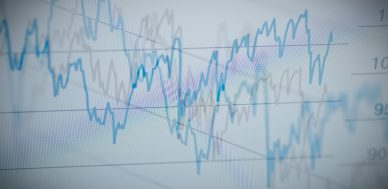Yield Curve Says Recession Likely For the U.S.
The U.S. economy is going through a very dangerous time. A recession could be brewing, and things may not end well.
There’s one indicator everyone should pay close attention to: the difference between yields of long-term and short-term U.S. bonds. Economists, who follow this very closely, refer to this as the “yield curve.”
You see, when the economy is expected to improve, yields on long-term U.S. bonds are higher than those of short-term bonds; in other words, the yield curve trends higher. This is considered a “normal” yield curve.
And if yields on short-term U.S. bonds are higher than on long-term bonds, that’s bad news. This is referred to as an “inverted” yield curve.
Now that you understand the basics, look at the chart below. It plots the difference between 10-year U.S. bonds and three-month U.S. Treasury bonds:
Chart Courtesy of StockCharts.com
Notice something?
Over the past few years, the yield curve has been declining.
At the moment, three-month U.S. Treasury bonds have a higher yield than 10-year U.S bonds. That means the yield curve is currently inverted.
If you look again, you’ll see that the yield curve was also inverted in late 2006, early 2007, late 2000, and late 2001.
Guess what followed those all periods a few quarters later? A recession.
Looking at the current yield curve, one has to wonder if a recession is ahead for the U.S. economy. The yield curve certainly implies that it’s possible.
What Happens If a Recession Becomes Reality?
I can’t stress this enough: the next recession in the U.S. economy could be a very bad one.
Here are few things that could happen in the next U.S. recession:
- The Federal Reserve may be forced to take the interest rates below zero and print a lot of money. The U.S. economy may subsequently require a lot more stimulus from the Fed.
- The U.S. government budget deficit could skyrocket. Why? Well, when the U.S. economy remains relatively stable, the government tends to spend. It’s already expected that, under normal conditions, the government’s deficit could reach over $1.0 trillion. In the midst of the next recession, said deficit could run well over $1.0 trillion; also expect the U.S. national debt to soar. I am not ruling out a national debt of $30.0 trillion by the end of the next recession.
- There could be severe misery for average Americans. Over the past few years, we have seen that many citizens haven’t saved much, and usually during a recession, there are heavy job losses. If we see rampant job cuts, how will Americans pay their credit card bills, mortgages, etc.?
- Corporate America could run into a lot of trouble, finding it difficult to sell their goods and services.
- The stock market is a function of the economy. Stocks top before the economy gets worse, sell off as the data makes the issues more apparent, and bottom at the time of peak uncertainty. In the next recession, indices could fall quite heavily; don’t rule out a 25%-30% decline just yet.
